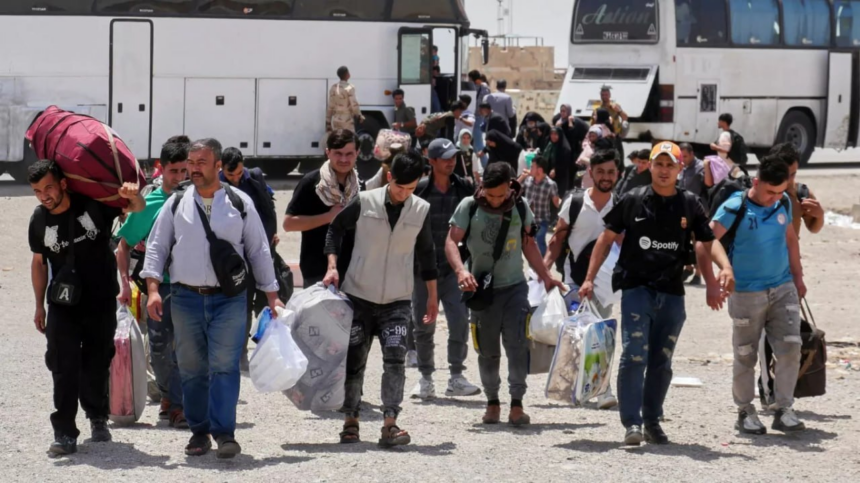RASC News Agency: Afghanistan witnessed yet another wave of forced returns as more than 6,300 Afghanistani migrants were expelled from Iran and Pakistan in a single day, according to figures released by the Taliban-controlled Commission for Refugees. The mass deportations highlight both the intensifying pressure on displaced Afghanistani citizens across the region and the Taliban regime’s abject failure to create even the minimum conditions necessary for their reintegration.
Taliban officials claimed that 6,348 individuals from 1,192 families were registered at border crossings in Herat, Nimroz, Kandahar, Nangarhar, and Helmand. The largest share of deportees 2,538 individuals from 488 families entered through the Torkham crossing in Nangarhar, most of whom were then transferred to other provinces. Spin Boldak in Kandahar registered 2,279 deportees from 424 families, while Islam Qala in Herat recorded 761 individuals from 144 families. Another 108 people from 25 families, alongside 537 traveling independently, were forced back through Nimroz. In Helmand’s Bahramcha crossing, 642 deportees from 111 families were documented.
The Taliban’s refugee commission sought to portray these expulsions as manageable, boasting of token assistance such as cash stipends for 543 families, SIM cards for 500 individuals, and the relocation of 1,700 returnees to their provinces of origin. Officials further claimed that returnees received temporary shelter, food, and medical care.
However, beneath this thin façade of control lies a grim reality. Afghanistan is already crippled by economic collapse, environmental disasters, and one of the world’s gravest humanitarian crises. The sudden return of thousands each day is not merely a challenge it is a catastrophe in the making. The Taliban, obsessed with policing daily life and enforcing ideological conformity, have neither the resources nor the political will to address the staggering needs of these vulnerable populations.
Humanitarian organizations and civil society groups warn that mass expulsions will only deepen Afghanistan’s misery. Border provinces are already overstretched, lacking adequate infrastructure and resources to absorb such large numbers. Communities that can barely feed themselves are now expected to host thousands of displaced families, while the Taliban regime diverts energy and attention to censorship, repression, and arbitrary decrees rather than genuine governance.
Returnees describe their plight in stark terms. Many had fled Afghanistan years ago to escape violence, hunger, or Taliban persecution, only to be thrust back into a country where opportunities are scarce and hope is extinguished. For women and girls, the situation is particularly harrowing: under the Taliban’s suffocating restrictions, they are denied education, barred from employment, and stripped of agency, leaving half of every returning family silenced and dependent.
International aid agencies warn that if the expulsions continue at this pace, the humanitarian emergency will spiral out of control. Rising unemployment, hunger, and displacement risk fueling unrest, while the Taliban’s rigid and exclusionary policies prevent any sustainable response. Instead of addressing the crisis, the regime remains fixated on consolidating power through coercion, further alienating Afghanistani citizens and undermining any possibility of stability.
The tragedy of mass deportations thus exposes a devastating paradox: while Iran and Pakistan push migrants back across the border, the Taliban cannot or will not provide the most basic conditions for their survival. The result is a vicious cycle in which ordinary Afghanistani families are abandoned, trapped between hostile neighbors and an illegitimate regime incapable of governing.






